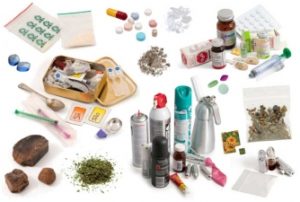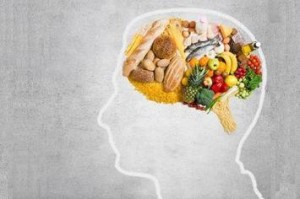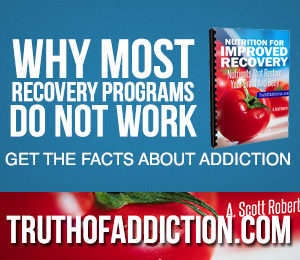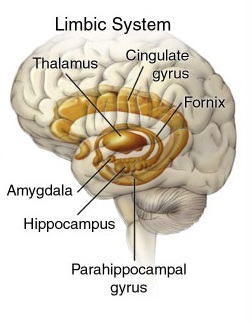 Why Having A Balanced Brain Is The Secret To Addiction Recovery
Why Having A Balanced Brain Is The Secret To Addiction Recovery
Having a Balanced Brain is the Secret to Addiction Recovery
-By A. Scott Roberts
M.S. Rehabilitation Counseling, Addiction Specialist
The brain contains around 100 billion neurons that communicate to each other by means of neurotransmitters, which are tiny molecules.
There are groups of neurons that have specialized functions that are organized into the multiple structures in the brain. In order for the brain to function at an optimal level, the neurons must maintain homeostasis – or an internal balance – among their constituent neurons and other brain structures.1
The brain tries to keep every component and system balanced by keeping neurotransmitters firing at appropriate times.
Researchers indicate that addiction causes an imbalance of the brain. This is because an addiction spikes neurotransmitters (chemicals) at much higher levels than normal. Dopamine is the primary neurotransmitter-activated when drug-taking begins.
Dopamine is also the main neurotransmitter involved in the limbic “reward” center. When it spikes, it excites the neurons (cells) in the brain.
 Dopamine is normally fluctuating around 20 to 30 percent.2 But when it comes to addiction, these “rewards” that artificially stimulate the limbic “reward” system in the brain, spike dopamine levels nearly 10 times greater than normal.3 When this happens, the emotional part of the brain (limbic system) starts to override the rational part (prefrontal cortex) which plans, reasons and understands consequences.
Dopamine is normally fluctuating around 20 to 30 percent.2 But when it comes to addiction, these “rewards” that artificially stimulate the limbic “reward” system in the brain, spike dopamine levels nearly 10 times greater than normal.3 When this happens, the emotional part of the brain (limbic system) starts to override the rational part (prefrontal cortex) which plans, reasons and understands consequences.
Scientists call the brain a “team of rivals”4 and these two brain structures are constantly pushing and pulling against each other. The prefrontal cortex, which understands the consequences of behavior, and the limbic system, which is primarily concerned with escaping either psychological or physical pain and gaining pleasure.
The prefrontal cortex warns us of our behavior, while the limbic system strongly urges us to continue. The limbic system is very strong because it is made up of very dense material, works largely at an unconscious level and pre-dates human development.
The limbic system is completely developed around the age 5, while the prefrontal cortex is still developing into our mid-20s.
When the spiking of dopamine happens at higher than normal levels, the brain starts to alter in favor of the limbic system. It overrides the rational, planning and assessing pre-frontal cortex that usually keeps the limbic system in check.
Because the rational part of the brain is subdued, the behavior of addicts may seem irrational to onlookers.
 Addicts try to obtain their drug of choice, regardless of its apparent and worsening consequences. The addict’s brain values the high psychological payoff, “reward,” over the negative consequences.
Addicts try to obtain their drug of choice, regardless of its apparent and worsening consequences. The addict’s brain values the high psychological payoff, “reward,” over the negative consequences.
Because of this “hijacking,” a normally balanced brain becomes switched to a pathologically imbalanced brain. This is why scientists literally call this process, hijacking.5
As an addict continues to use, there is an increasing craving for a diminishing pleasure. This is because tolerance starts to build. Because the brain wants to maintain proper homeostasis, after the repeated over-stimulation of the brain’s reward center from drugs, the brain reacts in a defensive way by making neurons less excitable and decreasing the natural production of dopamine (along with other chemicals). This ultimately makes the “reward” center under-stimulated without the use of drugs.
This is why recovering addicts often have a dismal outlook on life without their drug of choice. They have a hard time finding pleasure in natural rewards that non-addicts enjoy.
Often addicts will notice this “tolerance” and start to increase their drug-taking behavior because it takes more and more of the drug to maintain their high.
 Addicts initially started to use their drug to get high, but end up using just to feel normal.
Addicts initially started to use their drug to get high, but end up using just to feel normal.
Initially, the homeostatic state of the brain was thrown off from drugs, but after repeated over-stimulation of the brain’s reward center, the brain’s homeostatic state is now maintained by drug-taking behavior.
Without the drug, the brain system is thrown off. This contributes to mood swings, anxiety, depression and intense cravings. The depleted chemicals during this time produce powerful urges and cravings.
But, neuroscientists know that the brain is extremely malleable. It can adapt, change and rewire. Successful methods to manage addiction are evidence-based practices that not only use nutrition to restore the brain’s neurotransmitters but techniques that have been proven to rewire the brain out of habit loops.
 Nutrition implemented in addiction recovery has shown to produce incredible success. One researcher revealed that the use of key nutrients resulted in a 92 percent success rate.6
Nutrition implemented in addiction recovery has shown to produce incredible success. One researcher revealed that the use of key nutrients resulted in a 92 percent success rate.6
Compare that to the shockingly low reported 5% success in conventional treatments.7 The reason why nutrition is so successful is because it restores depleted and malfunctioning neurotransmitters in the brain caused by addiction. Neurotransmitters are synthesized by nutrition (particularly amino acids, the building blocks of protein).
Key nutrients combined with evidence-based cognitive and mindful techniques, change the brain by teaching the individual to react differently to cravings and urges as they did in the past.
 Most people try to suppress cravings or urges. Research shows that suppression just strengthens the urges.8 But using somewhat unusual and lesser-known mindful techniques geared especially toward addiction results in dramatic improvement in managing it.9 These are methods that high-end and luxurious treatment centers fail to practice or practice properly, explaining why the acute methods continue to produce dismally low success rates.10,11,12
Most people try to suppress cravings or urges. Research shows that suppression just strengthens the urges.8 But using somewhat unusual and lesser-known mindful techniques geared especially toward addiction results in dramatic improvement in managing it.9 These are methods that high-end and luxurious treatment centers fail to practice or practice properly, explaining why the acute methods continue to produce dismally low success rates.10,11,12
This is why the Truth Of Addiction system contains these methods that can be used with other common recovery options.
-A. Scott Roberts
M.S. Rehabilitation Counseling, Addiction Specialist
References:
1. How the Mind Works: Revelations, New York Review of Books, Jun. 26, 2008.
2. Getting the Brain’s Attention, Science, 3 October 1997 vol 278, issue 5335
3. Getting the Brain’s Attention, Science, 3 October 1997 vol 278, issue 5335
4. Blakeslee, Sandra (2002). “Hijacking the Brain Circuits with a Nickel Slot Machine.” The New York Times (February 19), Sec. F, 1
5. Blakeslee, Sandra (2002). “Hijacking the Brain Circuits with a Nickel Slot Machine.” The New York Times (February 19), Sec. F, 1
6. Finnegan, John. Addiction: A Nutritional Approach to Recovery. (Mill Valley, California: Elysian Arts), 1989.
7. Cooper, M. L., M. R. Frone, M. Russell, and P. Mudar. 1995. “Drinking to Regulate Positive and Negative Emotions: A Motivational Model of Alcohol Use.” Journal of Personality and Social Psychology 69:990–1005.
8. Vaillant, G. E. (1983) The Natural History of Alcoholism: Paths to Recovery. Cambridge, MA: Harvard University Press.
9. Bowen, S., K. Witkiewitz, T. M. Dillworth, and G. A. Marlatt. 2007. “The Role of Thought Suppression in the Relationship Between Mindfulness Meditation and Alcohol Use.” Addictive Behaviors 32:2324–2328.
10. R. G. Smart, Spontaneous Recovery in Alcoholics: A Review and Analysis of the Available Research, Drug and Alcohol Dependence, vol 1, 1975-1976, p. 284.
11. Thomas Prugh, Recovery Without Treatment, Alcohol Health and Research World, Fall 1986, pp. 24, 71 and 72.
12. Sehnert, 1992; Larson, 1992 “Seven Weeks to sobriety”

Holistic Health Warrior
More Thoughts from Mellisa
Question: What are you without an immune system?
Answer: You are dead.
As morbid as it may sound, it’s true. When your immune system is weak you will get sick. When your immune system completely fails you will die.
If I could show you a way to boost your Natural Killer Cells by up to 437%, would you be interested in hearing more? Of course you would.
